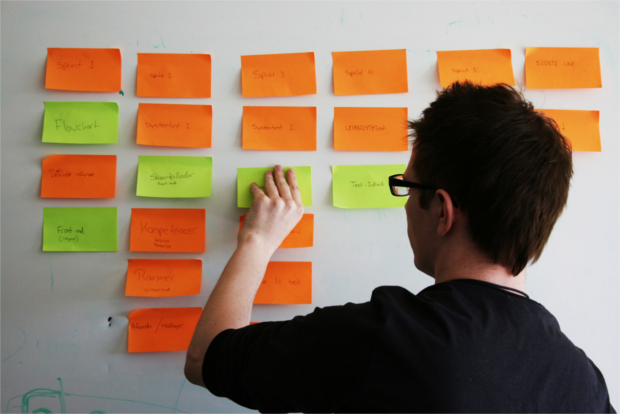Even small projects can often feel like there are a million things to think about to make sure it delivers the results you’re looking for. So, to help you make sure that nothing slips through the cracks on your next project this post will define the different elements that you should consider to ensure that it runs smoothly.
This article is part of our “Power Up” series to help you learn new skills and take your website to the next level.
Create a schedule
The first step in managing a project accurately from start to finish is a really clear schedule of what is to come. This will give you a detailed and full view of everything that needs to happen before you can stamp your project ‘done’.
A highly effective schedule should list the following elements:
Each different stage of the project
Each task within those stages
Each subtask within those tasks
The people who will work on each of the subtasks
Deadlines for each subtask
Here’s a quick example of how a schedule like this might look:
Project: Creating a content plan
Stage 1: Research
Task 1: Look at our Google Analytics data to identify our most popular content
Subtask 1: Produce a report listing our top ten most popular blog posts (Person A)
Deadline: Monday March 3rd
Review your schedule
Once you have created your schedule, go through it with a critical eye to flag up any adjustments that you can make the project run more smoothly. The following questions will help you identify these areas for improvement:
Are the time estimates realistic?
Would the project work better if more or less people were involved?
Could the tasks and subtasks be reordered in a more logical way?
Are any tasks and subtasks missing?
Are there any bottlenecks? E.g. if a person who needs to sign off a section of the project will be on holiday.
Are all the tasks and subtasks necessary to achieve success?
Have each of the subtasks been assigned to the right people?
After completing these checks, your project should have a clear outline that you can use to complete it on time and with the results you’re looking for.

Monitor the project
As your project starts to take off it’s important to periodically review how it’s progressing to establish whether your schedule is still ideal. Depending on the length of your project you may want to perform these checks more or less often. For example, if you’re planning to complete the project based on your schedule within a month it might be worth reviewing the schedule just once or twice, whereas if your project will take a year you may want to review its schedule five times or more.
When reviewing your schedule, ask yourself the same list of questions you used when you initially created your schedule and make any adjustments as necessary to ensure that your deadlines and the success of your project don’t gradually slip away.
Evaluate your project
Once your project is complete, it’s also a good idea to evaluate how it went so you can apply anything you learnt from the experience to future projects.
What could be improved?
Try these questions to establish how you can adjust your approach for better results:
Did we miss any key details of the project?
Did we take any assumptions for granted without testing them?
How did we respond to the adjustments we had to make?
Did we estimate time-frames for the project accurately?
Did we review our schedule during the project often enough?
Were the right people involved in this project?
Image credit: Theis Kofoed Hjorth
Comments
Please remember that all comments are moderated and any links you paste in your comment will remain as plain text. If your comment looks like spam it will be deleted. We're looking forward to answering your questions and hearing your comments and opinions!